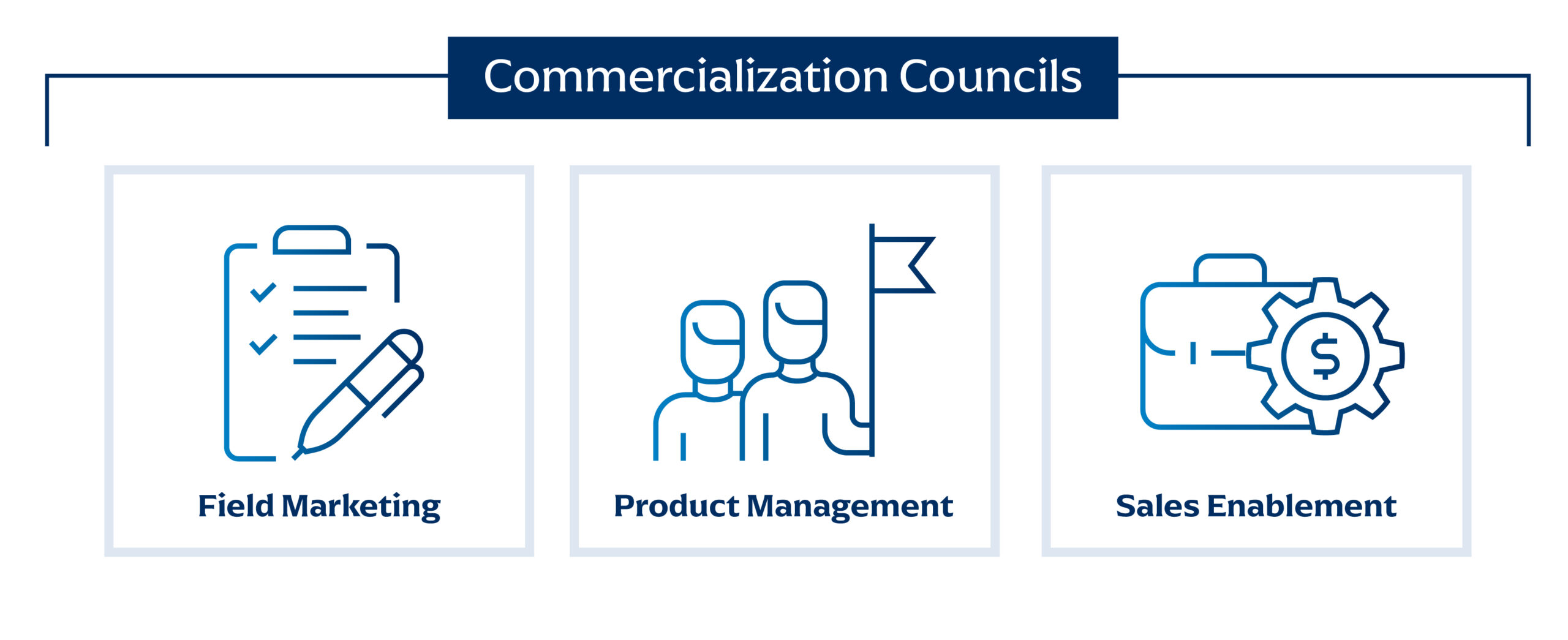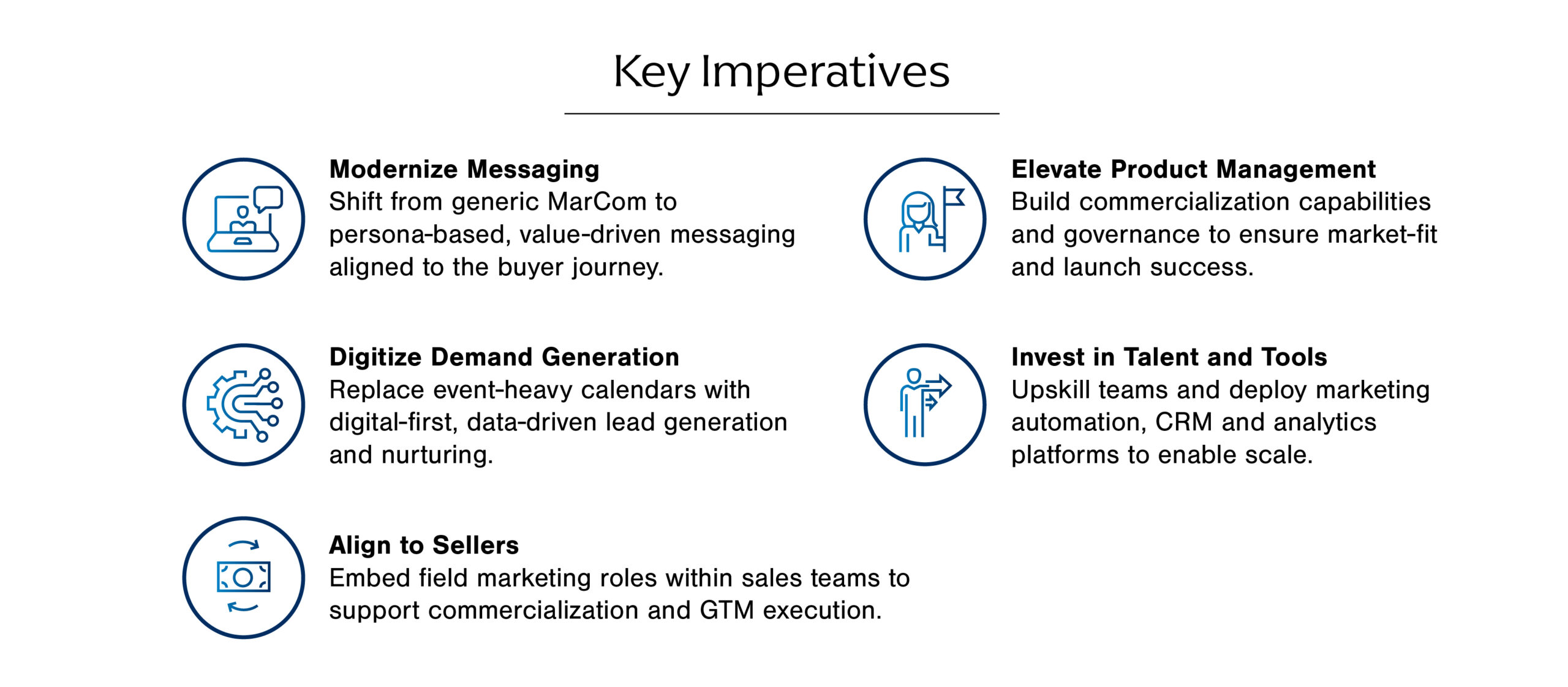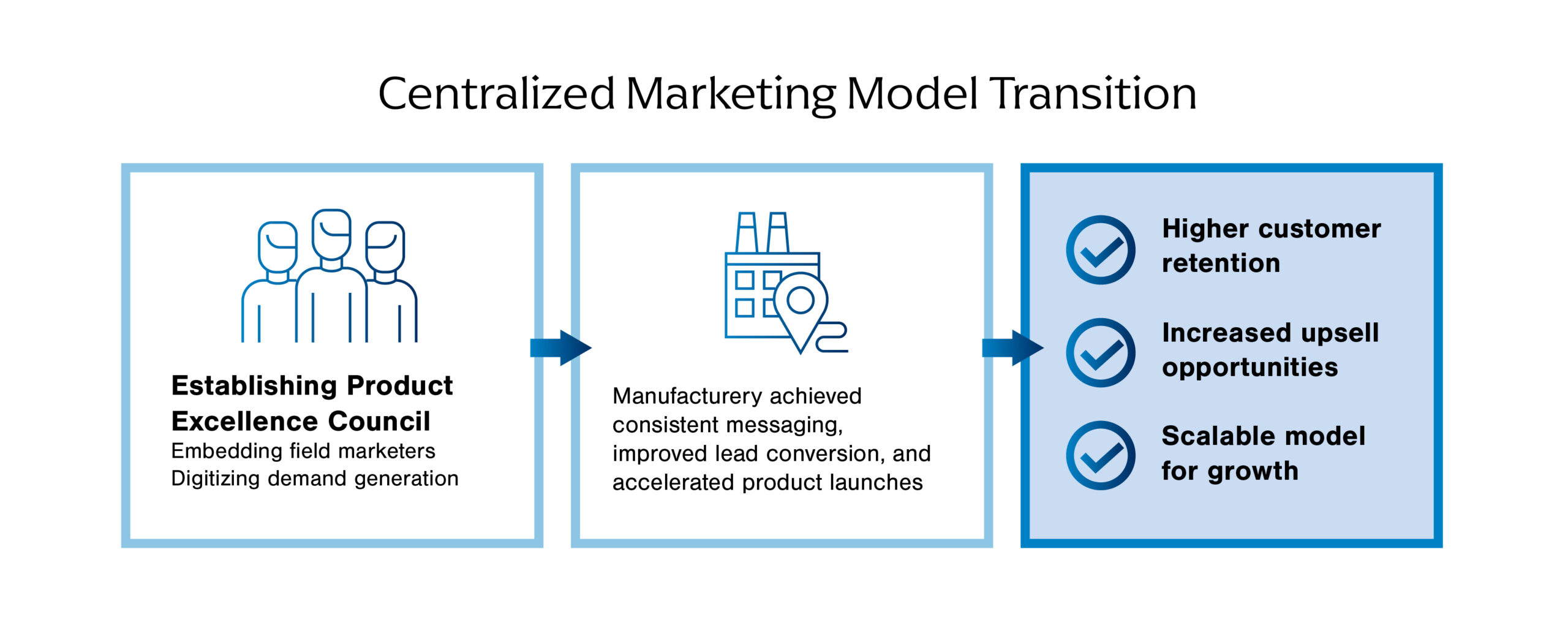Drawing on insights from recent field research and client engagements, this article explores how forward-thinking organizations are evolving their go-to-market (GTM) strategies to drive growth, improve alignment with sellers and unlock the full potential of their product portfolios.
Messaging Reimagined: From General MarCom to Strategic Enablement
To evolve from traditional MarCom to strategic enablement, industrial firms must reframe messaging as a growth lever rather than a support function. Leaders can begin by mapping value propositions to specific buyer personas and customer journey stages. This process ensures messaging resonates with decision-makers and influencers alike.
When aligning messaging with product strategy and sales motions, firms must also integrate product marketing into cross-functional commercialization teams. Ensuring consistency across channels and touchpoints is also essential, so firms should also establish a centralized content governance model. To drive seller confidence and customer engagement, firms can solidify this strategic shift by equipping field marketers with modular content kits tailored to verticals, use cases and sales stages.
Demand Generation Rewired: From Events to Digital Demand Creators
To modernize demand generation, companies should shift from event-heavy calendars to a hybrid model that blends digital-first tactics with targeted customer/channel marketing. Firms can begin by segmenting their customer base and aligning demand generation strategies to account potential, deploy high-volume digital campaigns for long-tail segments and account-based marketing (ABM) for strategic accounts. To qualify and route leads, it’s essential to build a digitally enabled lead generation function that uses behavioral data, propensity models and algorithmic scoring. Investments in marketing automation platforms and integration with CRM systems is vital for enabling real-time lead nurturing and performance tracking. Refining targeting and messaging is vital for success, which is why firms must establish a closed-loop feedback system between marketing and sales.
When scaling demand generation with digital precision, organizations should implement a data-driven lead management system that integrates marketing automation, CRM and behavioral analytics. For informing lead scoring models and campaign targeting, teams can begin by defining Ideal Customer Profiles (ICPs) and buyer personas. After defining personas, firms can target digital lead generation reps towards these prospects through virtual channels (chat, video, social, etc.) and route qualified leads to the appropriate sales reps using algorithmic prioritization. During the process, teams should use funnel analytics to identify drop-off points and continuously optimize campaigns based on conversion data. In addition to the funnel analytics, leaders are further increasing engagement and pipeline velocity via predictive modeling and content personalization AI-powered tools.











